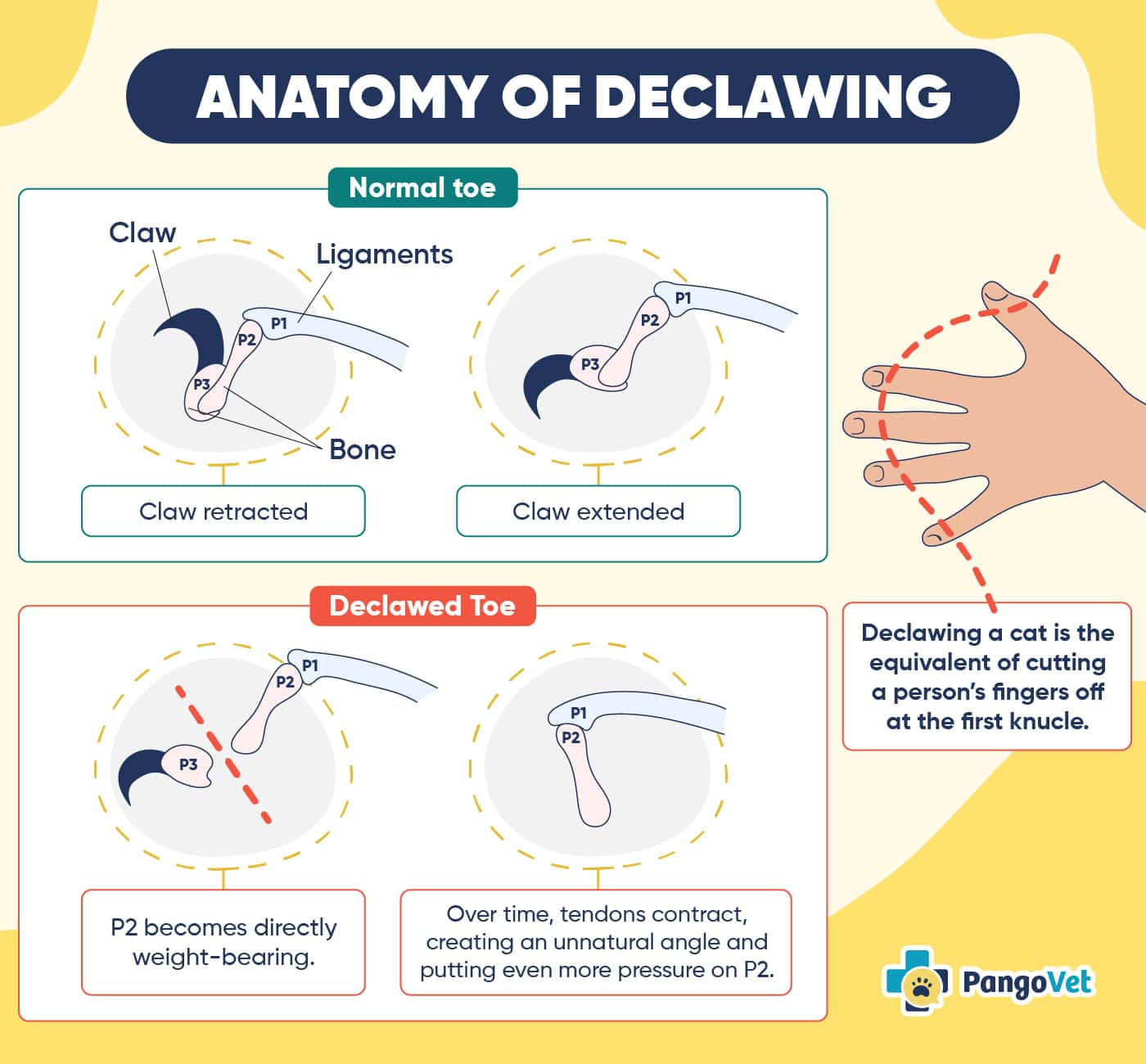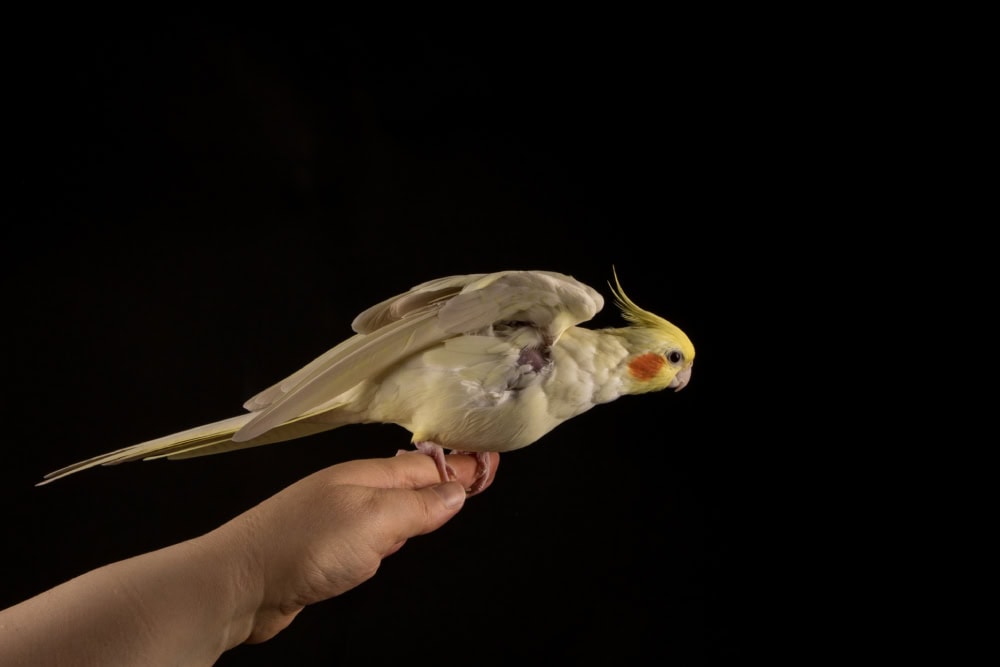
In a victory for animal rights activists and their furry friends, a new bill banning cat declawing has unanimously passed the California State Assembly. The 72-0 vote moves the bill forward to the state senate.
The bill, called AB-867, would amend the state’s laws so that declawing can only be performed by a veterinarian when medically necessary.1 Existing state law had already banned declawing for exotic and native wild cats, but this updated law would include furrballs of the domestic variety.
AB-867 was written by Assemblymember Alex Lee of Milpitas, who was inspired by his adorably named cats, Udon and Soba.
Interestingly, despite its broad appeal with the general public, the California Veterinary Medical Association has come out against the bill, submitting a letter of opposition expressing concerns that it will have “a far-reaching and precedential impact on a veterinarian’s ability to practice veterinary medicine” and calling it “fundamentally unnecessary” due to pre-existing self-regulation.2
What’s Declawing, Anyway?
Declawing has been a controversial topic for decades. It’s a surgical procedure that removes the last bone of the toe, along with the attached claw. Generally carried out to reduce scratching and other damage to furniture, this surgery can unfortunately cause health issues like chronic inflammation, infection, arthritis, nerve damage, and loss of use of the paw.
This surgery is often compared to chopping off a human’s first knuckles and nails – a truly horrifying image! Veterinarians and animal welfare activists argue that it’s an extreme, painful procedure that can cause lasting damage to cats.

Dr. Marta Vidal-Abarca MRCVS, one of our in-house veterinarians, comments: “Unless performed as treatment for a specific medical condition affecting the cat’s toes or claws, declawing is widely considered unethical. A 2023 study evaluating the effects of declawing on feline muscles concluded that ‘declawed felids have weaker forearms and are biomechanically compromised beyond merely removing the targeted claws.’ Additionally, a 2018 study showed that ‘declawing cats increases the risk of unwanted behaviors and may increase risk for developing back pain.'”
Declawing Alternatives
Luckily, there are many more humane alternatives if you’re struggling with a scratching-obsessed kitty. The top vet-recommended options are:
- Scratching posts – cats naturally need to scratch to wear down their claws, so you can help them by providing safe, fun scratching posts and boards to use.
- Nail caps – these are controversial as well, though less than declawing. Nail caps go on top of your cat’s nails to prevent scratching damage. However, they may limit your cat’s natural behaviors and need regular replacing.
- Regular nail trimming – keeping your cat’s claws trimmed will also help with scratching. A good pair of cat claw scissors can help you do this safely and efficiently.
Trimming your cat's nails isn't the easiest task in the world, but a well-designed set of clippers can make all the difference. Our Hepper Cat Nail Clipper Set features two sizes of clippers with easy-to-clean stainless steel blades and a built-in safety guard to prevent accidental cuts. These clippers are comfortable to hold, nicely designed to work at tricky angles, and even include a bonus hidden nail file and a convenient pouch!
Who Else Has Banned Declawing?
Australia made declawing, except for medical necessity, illegal back in 2001, and it’s also illegal in places like Brazil, the UK, New Zealand, and Israel, as well as some Canadian provinces.
As Dr. Marta adds, “The practice of declawing cats began in the US in the mid-20th century as a way to prevent destructive household scratching. However, thanks to studies demonstrating the negative effects of declawing, growing awareness of animal rights and welfare, and a deeper understanding of feline behavior, the procedure is now banned in certain U.S. territories, Australia, New Zealand, Brazil, and most European countries. Hopefully, it will continue to be regulated in more regions.”
If the California Senate passes this law, it will be the fourth US state to fully ban declawing, following New York in 2019, Maryland in 2022, and Massachusetts in 2025. There are quite a few cities on the list, as well, including Denver, Colorado, Austin, Texas, and both San Francisco and Los Angeles.
What’s Next?
According to the BBC, a 2011 study found that 55% of US cat owners were okay with cat declawing. But the tide may be turning, as more and more cities (and states) pass declawing bans. While we wait for the California Senate to vote on AB-867, you can get involved with organizations like PETA, the Paw Project, Ally Cat Allies, or the Animal Legal Defense Fund, or search for an organization local to your area. And if you’re struggling with a cat who loves to scratch, start with behavioral training and diversion, and don’t be afraid to ask for help from a veterinarian or animal behaviorist.
How useful was this post?
Click on a star to rate (you can leave written feedback after clicking submit)
Help us improve Hepper for pet parents!
Your feedback really matters.
What did you like about this post? Also how can we improve it?


















